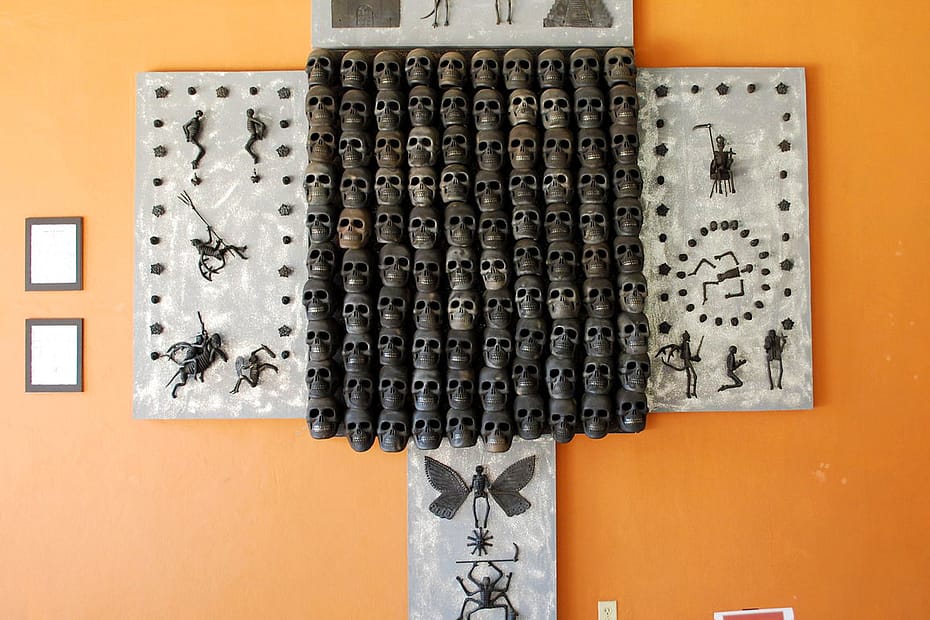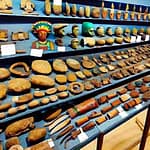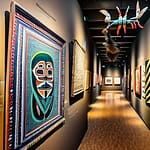Table of Contents
As an artist living in Mexico, I’m always conscious of the artistic history that threads its way through the land, the people, and everyday life here. The artisanal traditions of Mexico have evolved over thousands of years… perhaps nowhere is this more evident that in the state of Oaxaca.
The central valleys of Oaxaca have been home to multiple ancient peoples and their cultures. This has produced a long-standing tradition of both fine art and handicrafts. The area’s large cultural tourism industry provides many sales opportunities for artisans, and this is now a thriving industry.
One of these artisans, Carlomagno Pedro Martinez, stands out for his lifetime of dedication and his unique ability to blur the lines between handcrafts and fine art.
Early Life
He was born in 1965 in San Bartolo Coyotepec (a town in the centre of the state of Oaxaca), to a family of potters. This town is internationally renowned for its barro negro pottery. In the 1950s, a technique was developed here whereby the clay is burnished to a unique, shiny black finish.
He is named after the 1st century Roman emperor Charlemagne. Unlike his namesake, he is an unpretentious and humble man. He is most happy when he’s working his clay.
Developing a Unique Style
Although he started his training in traditional barro Negro techniques, while still young, he began to experiment with other techniques. Confident that his innovations had possibilities, he went off to study fine art at the Taller Artes Plasticas Rufino Tamayo (the Rufino Tamayo Workshop) in Oaxaca city.
This fine art training, coupled with his natural talent, led to his ability to interpret the traditional Oaxacan subjects of life and death in a new and more refined manner. Because so many of his pieces feature skeletons, it is tempting to dismiss them as Day of the Dead ornamentations. However, these are so much more, and are really declarations of his unique world-view.
Struggle for Acceptance
At the beginning of his fine art career, because of the artisanal nature of his work, coupled with his themes, he was not accepted by Mexico’s elite fine artists. His attempts to take part in fine arts events were spurned. This only changed after the respected abstract artist, Manuel Felguérez, criticised his fellow fine artists for their parochialism.
Awards and Accolades
Once his work started to be recognised as fine art, accolades and awards quickly followed. At the age of 25, his work was being praised by Francisco Toledo (one of Mexico’s greatest sculptors), and in 1987 he won the Premio Nacional de La Juventud Presidencia de la República (President’s National Youth Prize).
In 2014, he was fêted with the Premio Nacional de Ciencias y Artes (National Arts Prize) in the “Popular Arts and Traditions” category. This is Mexico’s highest honour for artisans. He received this award because the jury felt that his entry elevated the indigenous cultures of the Mixtec and Zapotec. Sr. Martinez was extremely proud of this honour, and felt that it justified all the hardships and opposition he endured during his artistic career to date.
He works are considered to be amongst the finest examples of both artisanal and fine art in Mexico, and he is routinely asked to create pieces for fine art galleries and museums – along with major art collections. Internationally, his work has been exhibited in the Mexican Fine Arts Center Museum in Chicago, the Laumeier Sculpture Park in Saint Louis, and the Galería de la Raza in San Francisco.
His Masterwork
His masterpiece is considered to be a mural he was commissioned to create for the outside of the Academia de Beisbol Alfredo Harp Helú (Oaxaca’s Baseball Academy) in his hometown of Coyotepec. This is a large 3m x 5m (10′ x 16′) piece combining representations of the Mixtec version of pelota maya (a Mesoamerican ballgame), a portrait of Babe Ruth, plus the history of the town of Coyotepec.
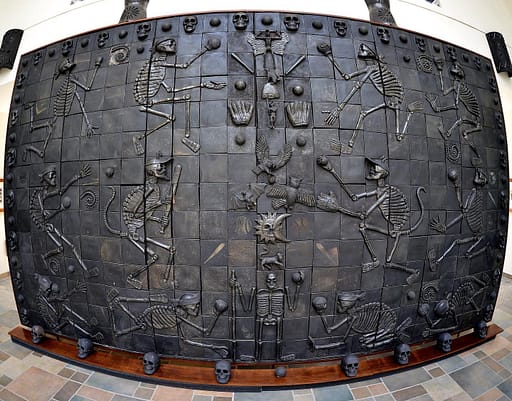
His Museum
His passions go beyond pottery making. When the state of Oaxaca resolved to create the Museo Estatal de Arte Popular Oaxaca (MEAPO) (State Folk Art Museum), they chose Coyotepec as the location and Carlomagno Pedro as its founding director. He continues in this role today. As a key cultural resource in Oaxaca, this museum has held hundreds of workshops, cultural events, and exhibitions over the years.
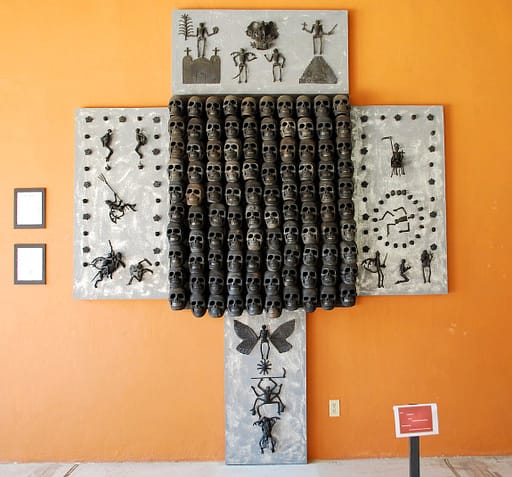
Although his current workshop has expanded over the years, and is much larger than that of his parents, it remains uncomplicated – it consists of four cinder-block walls plus a roof. Here, he creates his unique artisanal works, using nothing but his hands and a primitive potter’s wheel – these are the traditional methods unique to this area.
